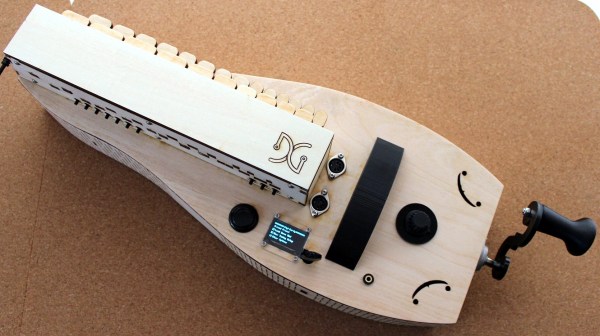The hurdy-gurdy is a fascinating string instrument dating from sometime around the 10th century. There is an active community of modern enthusiasts, but one can’t simply walk into a music shop and buy one. That’s where [XenonJohn] and the Digi-Gurdy come in, bringing some nice features while maintaining all the important elements of the original.

The hurdy-gurdy works by droning strings with a rotating wheel, and the player applies pressure to those strings via keys to play combinations of notes. Here’s a video demonstrating what it sounds like to play one, and one can see a conceptual resemblance to bagpipes, among other things.
The Digi-Gurdy is a modern electronic version that maintains the mechanical elements while sending MIDI signals over USB. It has options for line-out or headphone output. A thriving online community has shaped its development since its inception years ago.
We hope this leaves you wanting to know more because [XenonJohn] has loads of details to share. The main website at digigurdy.com is jam-packed with information about this instrument and its construction, and the project page on Hackaday.io has more nitty-gritty design details and source files for those who crave hardware specifics.
If [XenonJohn]’s name sounds familiar, it’s because we’ve admired his work on DIY self-balancing vehicles over the years. He also submitted an earlier version as an entry into the Hackaday Prize. His careful attention to detail shines through. Check out the two videos (embedded just below the page break): the first demonstrates the Digi-Gurdy, and the second shows off the construction and insides. You’d think a MIDI hurdy-gurdy would be unique, but, actually, we’ve seen more than one.
Continue reading “Ancient Instrument Goes Digital: The Digi-Gurdy”


















